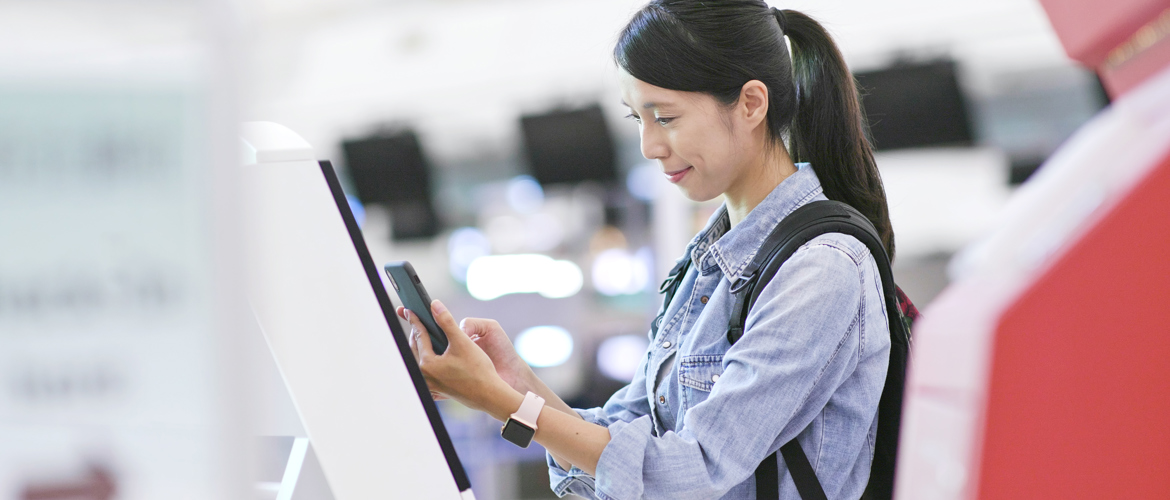Organizing Check-In Flow at Your Event: Attended Registration, Self-Service Kiosks, and Everything In-Between
February 5, 2024 • 3 min read • By Nicholas Royal, Customer Success

Options for utilizing self-service terminals (kiosks) for attendee check-in

Organizing Check-In Flow at Your Event: Attended Registration, Self-Service Kiosks, and Everything In-Between
Options for utilizing self-service terminals (kiosks) for attendee check-in
This article is a part of a series on organizing registration desks and using self-service registration kiosks with run.events:
- Enhancing Attendee Registration Experience with run.events Registration Desk module
- Organizing Check-In Flow at Your Event: Attended Registration, Self-Service Kiosks, and Everything In-Between
- Choosing Hardware for Event Registration Desks and Self-Service Check-In Kiosks
- Should you handle registration and badges on your own, or is it better to engage an external badging company?
In our previous blog post, we discussed run.events’ “Registration Desk” feature, which empowers event organizers to efficiently manage registration queues for the attended (manned) check-in desks.
However, check-in queues and the registration desks are not the only way to check in your attendees. Self-service kiosks are quickly gaining popularity because they can alleviate those queues and expedite the process. run.events’ Kiosks support a wide array of self-service registration and check-in scenarios, and this blog post will explore some of them.
Do we even need self-service check-in kiosks?
A fair question, indeed. First things first: this is primarily a business consideration, rather than a technological or financial one. The kiosks are actually probably going to save you some money, since you will need to hire less staff for check-in and registration desks.
Second, you have probably already seen all the photos of beautiful event-branded check-in kiosks. Yes, they are impressive, no doubts about that. They look good, and they will increase attendee identification with your event. However, each technology is there to serve your business needs, not to dictate how you should organize your check-in flow.
And lastly, if you decide to go with self-service kiosks, it’s unlikely that it is going to be your only check-in method. You’ll always need at least one human-operated registration point to handle “problematic” check-in cases, to replace lost badges, to serve as a fallback, and to manage other registration and check-in needs that require a human touch. Thus, the registration flow you’re aiming for is likely a hybrid one: providing self-service check-in for the majority of your attendees while also offering human-operated check-in points for those who, for various reasons, cannot use the kiosks.
Self-Service Check-In Stations: Key Considerations and Mistakes to Avoid
We decided to use self-service check-in stations for our event. What do we need to know, and which mistakes should we avoid?
When you approach a badging company or a hardware dealer for renting or buying your hardware, you will be offered a multitude of choices, and the number of options can seem very overwhelming. There are some great choices, but it is very easy to make a mistake here.
Before making this decision, you will need to answer a few questions and make a few decisions:
-
Do you have more than one badge design?
This is typically the case if you want to have different badge designs and colors for different attendee groups, such as attendees, speakers, exhibitors, VIP guests, or when you have two or more different event areas (or combined events) and you want to easily differentiate attendee groups by the badge color. -
Should all attendee groups be able to use all check-in stations, or is it OK if different attendee groups need to use different check-in stations?
How many attendee groups do you have? How difficult will it be to explain to them what the difference is and which stations they can use? -
Do you want to go for printing whole badges in one pass (full color)?
Or do you want to pre-print empty badge templates in your design and then use check-in stations to print only attendee name, company, job role, and similar data at the designated space?
The good thing is: whatever your answers are, run.events will be able to support your needs.
Option 1: All Attendees Use Any Self-Service Check-In Station, No Pre-Printed Badges
Badges will be printed in one pass. This means no badge templates will be pre-printed.
You will need to use one of the inkjet color printer options, either Epson CW C3500 / CW C4000 printers with fan-fold paper, or Swiftcolor or Canon printers using high-density paper or even plastic. This is the most expensive option but is also by far the most flexible one.
Option 2: Attendees Have Different Badge Designs (Colors) for Different Groups
Empty badge templates will be pre-printed in advance, and attendees will need to know which self-service check-in station they are supposed to use based on their attendee group.
Your attendees will need to know which self-service check-in station to go to, so there is some explaining work for you to do in this scenario. You can use thermal printers here, either the budget-friendly Zebra, Brother, and Dymo options, or more premium-like Zebra ZD621 printers.
-
Empty badge templates would have to be pre-printed in the required designs.
Be aware: pre-printing badge templates for usage with label stickers and budget printers such as Brother, Dymo, or cheaper Zebras is easy and inexpensive—any print shop will be able to do it. In this scenario, attendees will need to affix stickers on badge templates by themselves. -
Pre-printing badges for more premium-like thermal printers, such as Zebra ZD621, and fan-fold (“butterfly”) badges (where attendees don’t need to affix anything) is more complicated, especially in Europe, where only a few print shops are able and willing to do that. It is significantly easier in the USA.
If you go for this option, it might be worth talking to some of the badging companies (run.events works closely with many of them), which will typically help you with hardware and with the check-in flow, but which will also be able to provide you with pre-printed butterfly badges for you.
Beware: If you have more than two, at most three badge types/designs for different attendee groups, all of this will probably be impractical because some of your attendees will be confused by the complexity of the setup and searching which self-service check-in station they are supposed to use.
Option 3: Single Badge Design for All Attendee Groups
Attendees should be able to use any self-service check-in station. You use black and white thermal printers, and you will use a large font to print the attendee type at the designated place on the badge (“Attendee,” “Exhibitor,” “Speaker,” “VIP,” etc.).
Your attendees can use any self-service check-in station, so there isn’t much explaining work for you to do. You can also use thermal printers, either the budget-friendly label-sticker options or more premium Zebra ZD621 printers for fan-fold badges.
- Empty badge templates will have to be pre-printed, with enough white space left for the attendee data.
If you go for the budget-friendly options, opt for larger-size labels, so you have enough space to include the attendee’s name and company, QR code, and attendee type in a large font (see paper options for Brother printers here and for Dymo printers here).

You have questions?
Talk to us.
In our team, we have 22 grown-ups, 2 babies, 4 dogs, 2 cats, and 0 bots. We know a whole lot about event management, event planning, event registration, check-in kiosks, and similar topics. And we'll be happy to talk to you!
Recap
Navigating the landscape of event registration and check-in hardware can seem difficult, but with a clear understanding of your needs and the options available, it can be a streamlined and cost-effective process. Whether you opt for attended registration desks or self-service kiosks, the key lies in selecting the right combination of hardware - tablets, printers, and stands - that aligns with your event's size, audience, and budget. By carefully considering the pros and cons of different hardware choices, from the reliability of Windows tablets to the print quality and cost of various badge printers, you can create a registration setup that not only makes attendee experience a good one, but also reflects the professionalism and branding of your event. The goal is to provide a smooth and efficient check-in process, setting a positive tone for the event right from the start.





